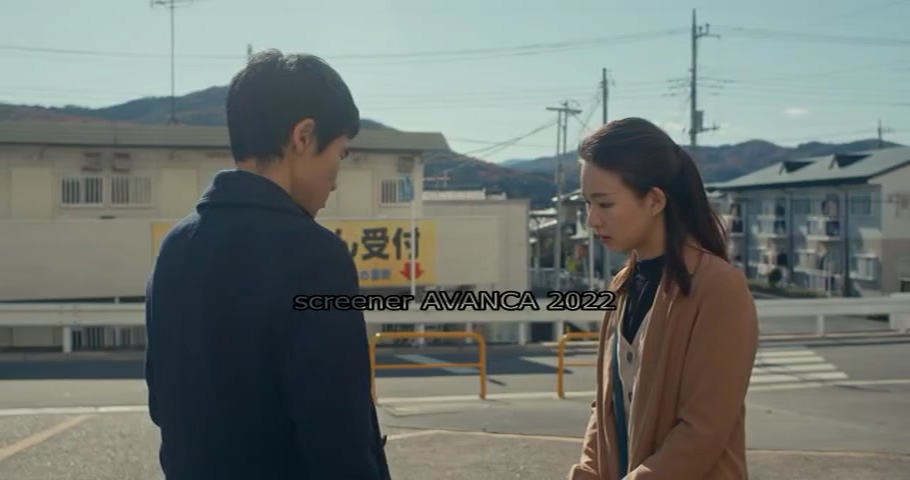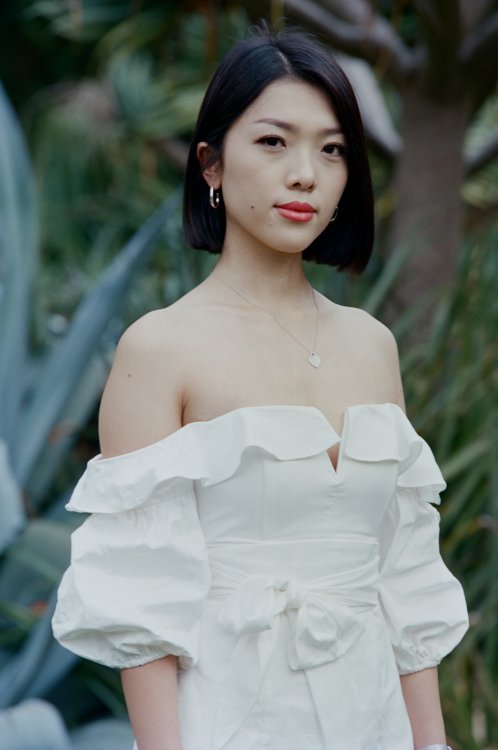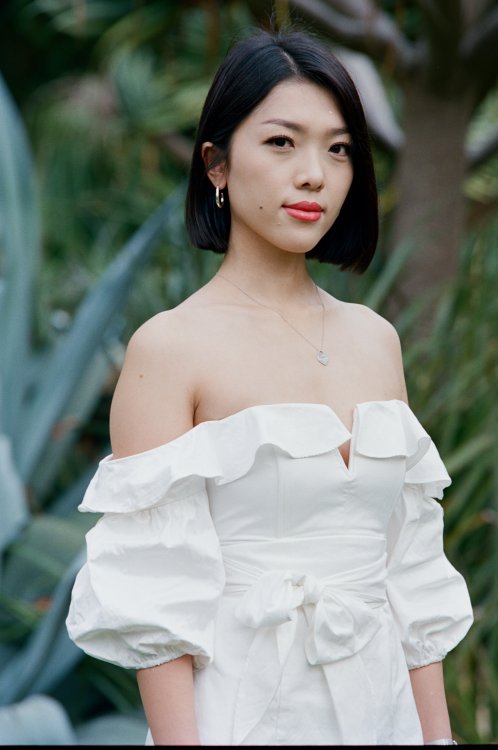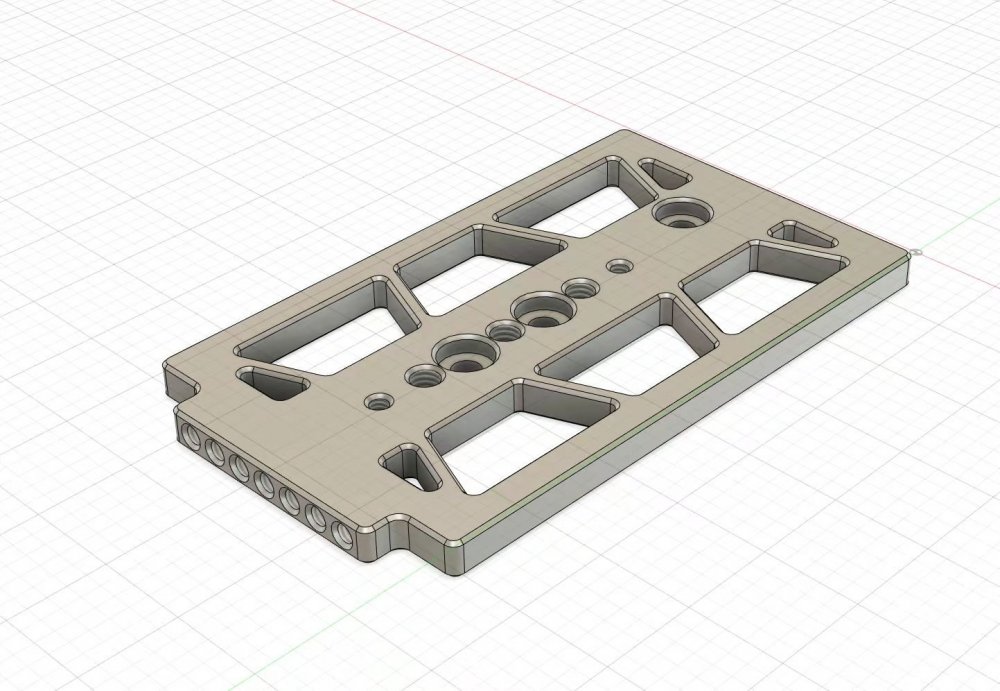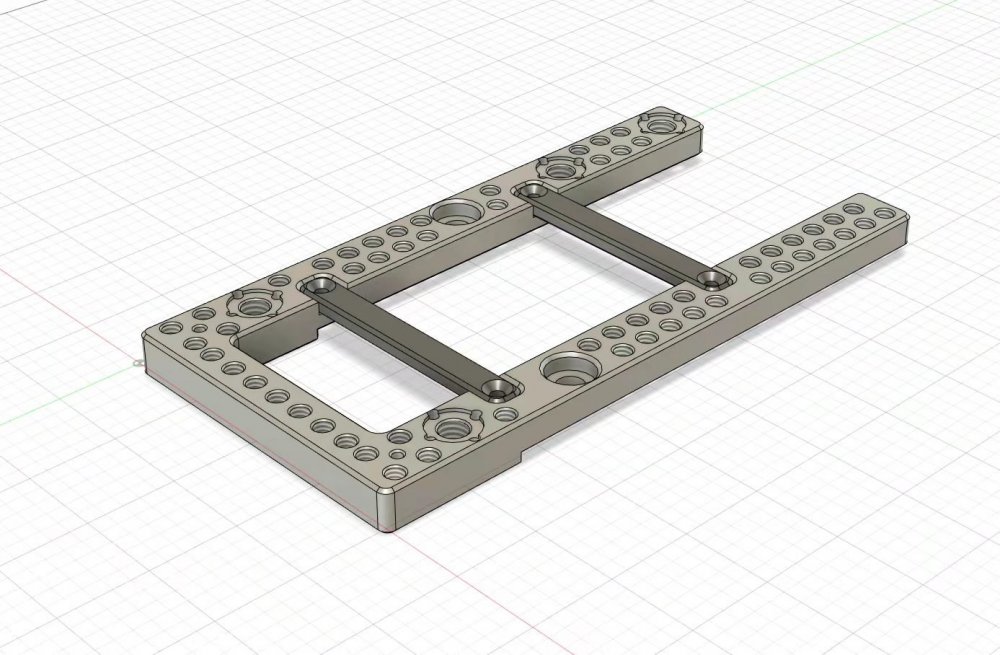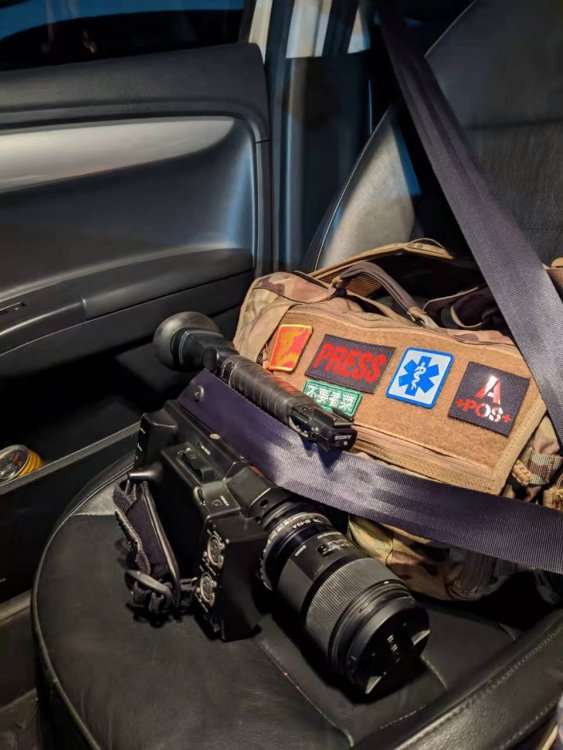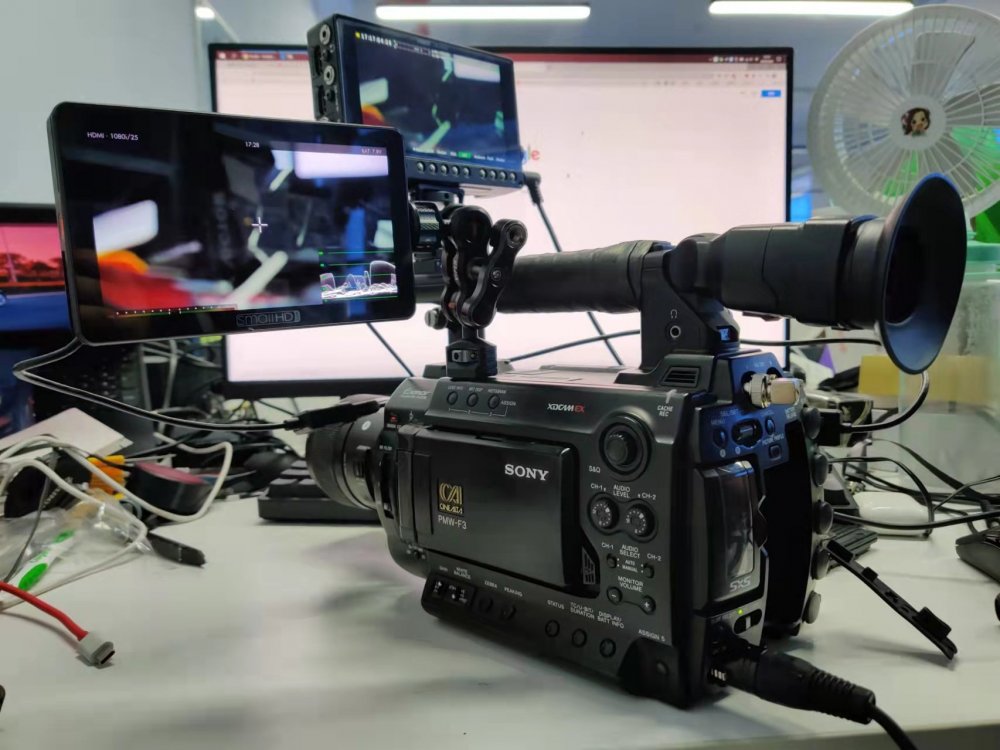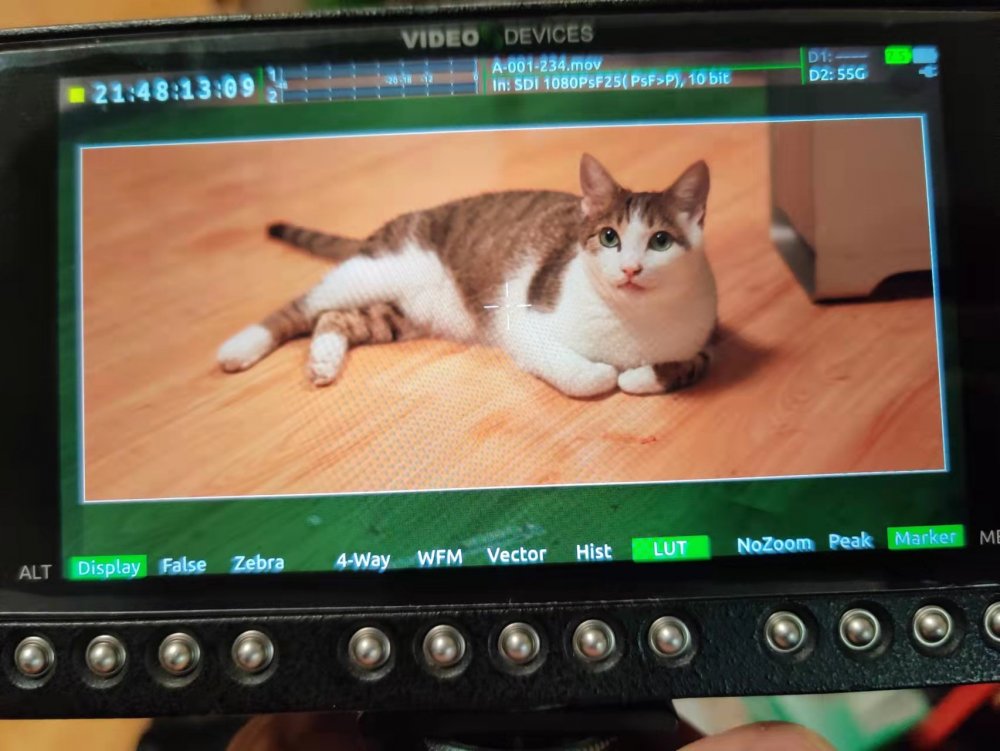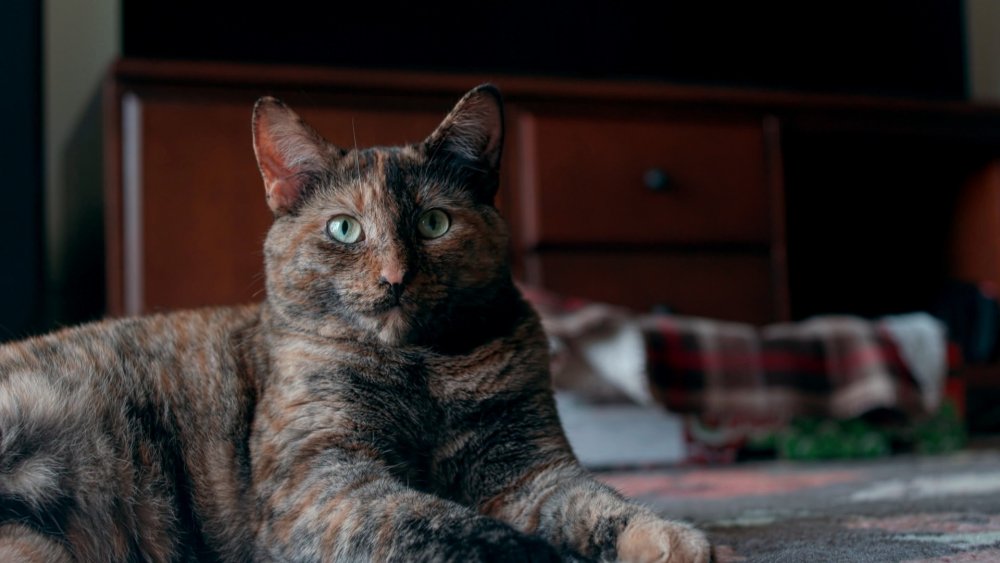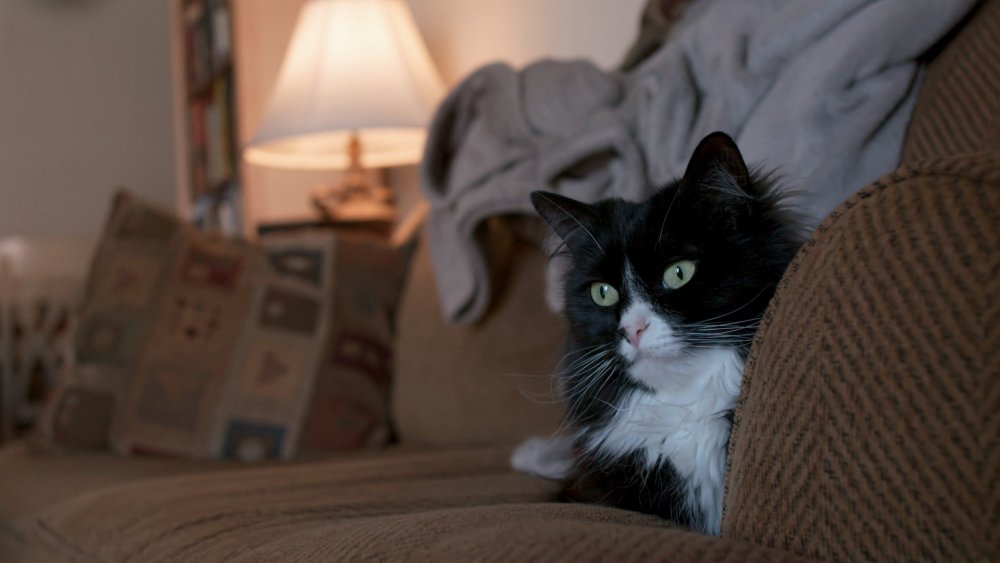Leaderboard
Popular Content
Showing content with the highest reputation on 06/26/2022 in all areas
-
They are incredible camera series... Here's one produced by me shot on P6K G1:4 points
-

Why are bad cameras the best cameras?
TheRenaissanceMan and 2 others reacted to hyalinejim for a topic
Ah, I see what you mean now. The reason I misunderstood you is because 2% to 90% = 5.5 stops is a measure of light reflectance. It's a property of the scene and not of the recording medium. It's true no matter what camera you're using. Ha ha! Yes, seven stops is pushing it a bit even for Portra 400. However, the image is still usable, if not optimal: Now please don't say "I should have said eight" as I've run out of images in this series 😂3 points -

Blackmagic Gyrodata will be used in Resolve!
majoraxis and 2 others reacted to Davide Roveri for a topic
Ok, i did more testing today with a wider lens (10mm so 15ish mm equivalent) and i tried some more complex moves as well.. Few more notes: -45º shutter angle is pretty much a necessity so all the clips have been recorded with that setting (i tried to introduce some motion blur back in in a couple of clips as well and it might even work, i just need to understand how much of it to use) - The camera doesn't seem to record any Gyro data if the lens stabilisation is ON (i'm not entirely sure about this but certainly the option to select the Gyro stabilisation doesn't appear inside Resolve on the clips shot with OIS) so you have to remember switching off the lens stabilisation if you plan to use the gyro. I reckon it kind of make sense though because without knowing the data from the lens gyro the result would probably be a bit messy 😅 - I have noticed some strange sharpening artifacts in high details area when a clip has been stabilised using gyro but thankfully it seems to only affect the GUI and not the monitor output nor the final render (I'm on Windows 10) - The results are overall very good, in shots with simple moves there isn't a great deal of difference between the gyro and the algorithm based stabilisation (the building tilt shot and the cushions shot for istance) but in other shots where there are more complex movements and lots of geometric elements that can (and did) wreak havoc on the traditional stabilisation methods the difference is day and night. I would not suggest this is a gimbal replacement by any means because is not but it's definitely a feature that will enable camera movents that are most probably not possible in any other way when you don't have or want to use a gimbal so it's quite exciting! ps. on the clips where there is severe warping from the perspective stabilisation i tried to use the clips without OIS as well to see if it would fare any better but it made very little difference, it was unusable anyway.3 points -

Why are bad cameras the best cameras?
IronFilm and 2 others reacted to hyalinejim for a topic
Now, @kye I'm a big fan of your posts, steeped in research and a relentless pursuit of the truth, with a generous doses of suspicion of received wisdom and contempt for misapprehension and hearsay. But in this case you might be a little bit guilty of some of the things that you so rightly rail against! I haven't read the link as I'm drinking wine on holidays in Tuscany, but surely the point being made in that document is that the difference between 2% and 90% reflectance of linear light is 5.5 stops (it's straightforward multiplication), and not that negative film has a dynamic range of 5.5 stops (slide film might, depending on the film). No, it's not similar to film, unless you're talking about Velvia slide film, for example, which does have a very limited dynamic range because it's so contrasty. Negative film can record a lot more. Around 10 stops is probably the lowest I've seen (Ektar 100). That's the recording medium. The display medium traditionally was paper (about 7 stops) for print photography, depending on the paper, and I don't know how many stops a projector could reproduce but I'd guess that for movies the dynamic range of the negative was compressed to fit the dynamic range of the print film. Sony's point about Rec709's dynamic range being around 5.2 stops has a lot to do with the dynamic range of a traditional CRT display. And historically this was all that was needed. Black paper and white paper in flat lighting conditions, ie: TV studio lighting. If you watch old BBC shows like Fawlty Towers and Mr. Bean you'll notice that the interior scenes, where lighting could be controlled, were shot on video, and exterior scenes (where it couldn't) were shot on film. It was all compressed for shitty old TVs. But you can still spot the difference. Any Vision 3 film or still film based on Vision 3 technology should be ok at 5 stops over for skintones. The highlights will be a bit compressed for sure, but the skin itself when properly colour balanced should look fine. Here's Portra 400 at 5 stops over: Anyway, these are just small points and your thesis still stands: that there's a lot to be gained from shooting with "lesser" digital video cameras. To that I would add for you specifically Kye or anyone else reading this thread who is interested in image quality - which I define as (in order of importance) colour interpretation, stops of light reproduced and resolution - get yourself a 1990s/2000s autofocus film SLR that will accept one or more of your existing lenses and shoot some film OR any film camera. If you like pretty pictures, it leaves digital in the dust. But yes, we are shooting on digital devices that record 10+ stops and have been for quite some time now. The average scene brightness range is 7.5 stops and if you're grading for a Rec709 display, traditionally that meant quite a bit of contrast. So if your camera A does 12 stops a camera B does 10 those 2 extra stops are in the very bright highlights and the very dark shadows. However, with an insipid Netflix drama grade where everything just looks like they shot in log but forgot to apply a lut you would definitely notice a difference. I don't think film ever looked much like that (although it could, if we had wanted it to). And we'll look back on the log look in ten years' time with the same rueful sense of aesthetic horror as we view any decade's transgressions of taste, until in another decade or two they become cool again and everyone scrambles to recreate it. So don't throw out your first gen Sony S-Log thingy, just as I've kept my MiniDV Canon XM2 that I expect to be asked to make a music video on any day now.3 points -

Why are bad cameras the best cameras?
kye and one other reacted to QuickHitRecord for a topic
This. It's more satisfying to get a lot out of a little than a little out of a lot. And this applies in a much more profound way when you're just shooting stuff solo, for fun. It becomes, "Look what I was able to capture -- wow!" versus "This is all I was able to do?" Of course, it all changes in the context of a time-sensitive/high pressure paid shoot, when you need all of the help you can get.2 points -
Canon EOS R7 and R10 have released...
solovetski and one other reacted to herein2020 for a topic
I swear by these cards. Sorry to wander off topic again 🤣, but my C70 can shoot up to 4K30FPS Cinema Raw LT which has sustained data rates of 250Mb/s; far above the V30 rating. These cards are in my R5, C70, and the micro versions of it are in my drones and GoPros.....I've never had a single problem with any camera and any of these cards. I think the problem is like @webrunner5 stated.....there are too many situations that a typical shooter will run into where it is not useable. Yes, the YT reviewers of the world focus on these shortcomings and shout it from the mountaintops, but that does not mean it is not a legitimate problem. Those same YouTubbers did the same thing when the R5 and R6 overheating fiasco first came to light; and overheating with the R5/R6 is another legitimate problem. IMO if you are buying a Panasonic camera for important work, you are buying it because of their excellent video features and tools, but with the understanding that you will need to use MF. If Canon had an R7 at the time when I was purchasing the GH5 or S5, I would have never even owned a Panasonic. In 2022 as much as I got used to MF, AF is just too useful and too "freeing" allowing you to focus on so many other things that I would never want to go back to having to MF every shot. Yes some of my problems were my own doing....I didn't trust the L mount "alliance" and stuck with Canon glass, but their native lenses convinced me I was doing the right thing since even with native glass the AF was simply too unreliable. I think in certain situations Panasonic cameras would be perfect.....product shoots, talking heads (as long as you have enough light for a deep enough DOF like in a studio setting), if you have a dedicated focus puller, outdoors static tripod shots, etc.. But the list of situations where it is unusable is much longer than that list; in 2022 with the plethora of offerings from Canon and Sony why get a camera that is so limiting in such a critical area? Even Nikon has a better AF system than Panasonic. Lets not even mention the L mount alliance and how few and expensive their native lenses are. Even Canon's AF is far from perfect especially on the C70. I flip to MF all the time when I feel I can't trust the camera to pick the right subject, mainly because I don't trust the face tracking just yet and right when I start to trust it, it lets me down at a bad time.....but those times I really need AF, like when I'm on a gimbal or the subject is approaching or departing quickly; it works perfectly every time. So back on topic 🙂, Dan Watson is another reviewer who I like to watch, and he happens to have an early hands on review of the R7. Once again, it is surprising how much of a quality hit the R7 takes when switching to pixel binning for 60FPS. I usually don't care about such things and leave them to the pixel peepers, but with the R7 it is very noticeable.2 points -

MAKE-BELIEVERS on AVANCA film festival (Portugal) this July
hyalinejim and one other reacted to Emanuel for a topic
LOL It's just a scene but yeah, sounds inspired from but on that one, you need to ask it directly to Kenjo, my partner in crime, he is half Irish by father side, you know? I'd dare to say melancholy is not absent from there either... Even though, much something more added there as well, I believe and see : ) Thanks for your care ! :- ) Here's a new (official) trailer which I guess unveils a bit more of it:2 points -
Good points, but I think perhaps you took a few things out of context. Firstly about the DR figures.. your quote was correct - I did say "colour negative film has 5.5 stops of DR between 2% and 90%", and I did mean that, however, I absolutely did not mean "colour negative film has 5.5 stops of DR", which is a completely different statement and one that is factually incorrect, as you point out 🙂 (As you said that you didn't read the page I linked to, ARRI actually said "Current color negative materials can capture a dynamic range of 9 stops" and then had a summary table that outlined the exposure values at various points, of which the 2% was three stops below mid-grey and 90% was 2.5 above mid-grey). The reason I quoted stops of DR (either for the 2%-90% range for film or 5.2 stops for rec709) was to establish an absolute measure for how much contrast in a scene would translate to how much contrast in a given image. What I mean by this that when you adjust the image so that the clipping point of your input file is at 100IRE and your noise floor is at 0IRE, you can then adjust the contrast knob and you decrease the amount of stops that fit between (say) 10IRE and 90IRE, without losing the total DR (because it compresses that in the rolloffs). The point of mentioning these things was to make the comparison between the DR captured by these "worse" cameras and the level of contrast in a properly lit/exposed film pipeline (eg in theatres), or a properly lit/exposed 709 (eg video broadcast). This means that in these lesser cameras, by the time you shoot something in their 709 profiles (and maybe add some contrast or rolloff in post) then you're getting a similar level of contrast in the final image to these reference pipelines. The purpose of that comparison was to say "these cameras have a similar level of contrast to get the looks that are desirable and even nostalgic". I would go further than this actually, I think that given the (perhaps) 7-8 stops of DR in the video mode of these "worse" cameras it's easier to create an image for non-proficient colourists than it is to do so with a camera that captures more DR. I know that when I was grading the images from the XC10, I had trouble with its ~11 stops of DR, because I wanted to keep everything it captured, all the way from the texture in the clouds to the subtlest shadow details. I don't know what it was about that challenge that kept me from getting it right, if it was that when I added enough contrast I would lose any contrast in the parts of the image that got pushed into either rolloff, or if I didn't know how to balance the level of contrast with saturation (converting the XC10 C-Log into rec709 using the CST or Canon LUTs gave crazy saturation that I didn't know how to deal with at the time). Regardless, it was essentially too much for me to handle and I struggled. Had I been given an image with those levels of contrast built-in, I think I would have just taken what I was given and did what I could with it. There's also an element of the paradox of choice. The more choice we have with something, the more that we get anxiety around not having chosen the best option. The optimum amount of choice is (of course) not zero, but actually the peak where anxiety hasn't yet overtaken the experience is quite low in the overall spectrum, certainly lower than people would think, especially in todays world where manufacturers are always pushing us to think that more options is better.2 points
-
Canon EOS R7 and R10 have released...
MurtlandPhoto and one other reacted to newfoundmass for a topic
They need to switch AF if only for the PR/marketing. The issue I have is that a lot of people spew the "Panasonic auto focus is useless" stuff without having used it. They're basing it off of YouTubers that only had the camera for a brief period and who did unrealistic tests. It's different when it's @herein2020, @MurtlandPhoto, or you saying it because you guys have used the cameras, learned how to work around the limitations, but ultimately decided that AF was necessary for your needs. My work would greatly benefit from Sony or Canon AF. But Panasonic ticks every other box, giving me things that I value more. All cameras have limitations, unfortunately, it's just a matter of finding a camera that matches most of your needs. To bring this back to the R7, that's part of the reason I am complimentary about this camera even though it isn't perfect. Assuming the overheating isn't an issue, the R7 is a really good option for a lot of people like me that shoot events. And it's competitively priced. An event shooter could buy 3 of these and have a really strong multicam set up for under $4,000. That could be a huge deal. I was leaning towards leaving Panasonic because I have concerns about its long term viability if it doesn't improve the AF and eliminate that stigma. To me, the long term viability of a company matters when investing in equipment. I don't want to sink money into a camera system that could be gone in 5 years, leaving me SOL if I need customer support, etc. Getting such a good deal on the Lumix S5 though got me to stay, at least for now. Things could change in a few years, but until then I'll keep getting the most that I can put of these cameras.2 points -
That 10 stops of DR would be for photos, while for videos it would be less than that.2 points
-
Canon EOS R7 and R10 have released...
MrSMW reacted to newfoundmass for a topic
I get your frustration, and understand your bigger point, but @MrSMWcomes on these forums and is one of its best posters because he shares his actual experiences in depth. I don't think he's ever been mean or condescending to anyone. Maybe try being a little more polite to people like him that come on here and share their experiences?1 point -

Why are bad cameras the best cameras?
kye reacted to fuzzynormal for a topic
There’s a theory that says conflict to attain creativity is something that actually enhances creativity. Limitations get the creative juices flowing. If you want to dive into the whole evolutionary benefit of this phenomenon, you can mull that over too.1 point -

MAKE-BELIEVERS on AVANCA film festival (Portugal) this July
Emanuel reacted to hyalinejim for a topic
It looks great @Emanuel! Is it a kind of Umbrellas of Cherbourg vibe but without all the melancholy and unhappiness?1 point -
Nope. But I appreciate you knowing my mind better than I do myself Kye 🤨1 point
-

Sony PMW-F3 with 2500 hours on it. Should I buy it?
IronFilm reacted to Triste Han for a topic
Last week I got a F3 include the original FZ-PL mount for 530US$ in China, NO SXS card, NO battery, NO mic, but with 444 upgrade and 3D shooting upgrade with only less than 500 hrs op time. Thought it was a relly nice bargain. Only down side is there is some kind glue marks on the LCD hinge cover. But it dose come in cheap and nice, I can live with it. Since this camera was discontinued for a decade, I don't think there were any 3rd party rigs for sale. So I designed a base plate and a top cheese plate this weekend, waiting for machining and oxidizing now. Maybe I'll get back next week to show your guys the outcome. Tested it for a little bit with video devices PIX-E5, truly amazing image quality (or more specific: the color science) both under sunlight and nighttime. Looking for some amatuer project to shoot, and get some lovely pictures😀 Forgive my English, i"m not very good at it.1 point -

Pocket 6K G2 Announced
newfoundmass reacted to Emanuel for a topic
Yeah, in fact : ) A Japanese feature film. There's a specific thread open now here:1 point -

Canon EOS R7 and R10 have released...
newfoundmass reacted to MrSMW for a topic
That's pretty much the sum of it for me. I was maybe a little hasty moving to L Mount from Fuji and if Covid had not happened and things had been as they should have been, I probably would not and have soldiered on with Fuji. Almost 99% sure that would have been the case as I had sold off almost all of my kit and had a pre-order in for a pair of XH4's and a couple of new lenses. But Covid did happen and I did switch to an L Mount system and I am happy with it, - especially the output I get from it. However, it's a concern as a business user, - the stability and longevity of their camera division. I made a decision recently I would wait until the end of my season, so early Oct, this year. Then if a Series 2 S line is on it's way either with phase or a proven excellent tracking DFD AF system, I shall probably stick with L Mount but have some kind of reshuffle because although my 4 cam approach works, I'd rather switch to a 3 cam system and have all 3 cameras preferably identical. The only system that actually meets my requirements is a Fuji XH2s based on. Or possibly r or whatever the next camera coming this Autumn is like, but essentially they now have the bodies and the lenses that work for me and 2.5 years ago, they kind of didn't. Sony and Canon are both viable options but as much as I'd like Nikon to be, I don't think it is...but would have to check the latest spec etc, especially after firmware upgrades. A 3x body R7 approach could be my next best option after Fuji... But, I need to see what happens first with Lumix and Sigma body-wise towards the end of this year as that will be the deciding factor. I feel I am 'almost there' with my current set up, but from a logistical POV more than anything, not quite...1 point -
Kodak claims 20 stops and Arri claims 10 stops of DR for negative film... so it's probably somewhere in the 13-15 stop range.1 point
-
The image looks indistinguishable from my XC10, although I haven't edited the files from it in a while. Maybe with a much more contrasty grade the 10-bit advantage of this camera would be more visible.1 point
-
Fixing things in post is a real mixed-bag. Lenses with simple (ie, not complex) distortions can be fixed in post to make the lines relatively straight, but that's not going to cut it for things like large groups of people. The fundamental problem on wider lenses is that the world is angled and sensors are not, so objects on the edges of the frame will appear larger than ones in the middle of the frame. You can adjust the image to straighten lines (as you would do for architecture) but this makes the relative sizes between the edges and middle even worse. Or you can choose to adjust it so that the sizes are relatively similar but lines will not be straight. There's no way to get both in the same image unfortunately, and lenses that are rectilinear (have straight edges) will have the worst corner stretching. Here's what is happening: Notice how the corners get stretched? Things look even stranger when you move the camera. The 14mm f2.5 isn't too bad, but is still quite curved. IIRC it can be corrected pretty easily. I have it and can do a quick test..1 point
-
Interesting, that's a lot more forgiving than I would have thought, being that 5-stops over is pushing things right up into the highlight rolloff. Maybe I should have said 7 stops over! Just goes to show the relative "bit-depth" of analog and what kind of subtleties are there, should they be expanded out to be more visible. I guess that really emphasises the importance of bit-depth, and suggests why cameras like the ARRI, the Canon 5D with ML, etc have such great and flexible images. In a way, the 9-stop DR of film that ARRI was talking about is 9-stops combined with an almost limitless bit-depth - such a great combination for colour subtlety and richness. Every time I try and emulate the look of film in a project (not in a technical way but using pre-existing LUTs or transforms) I learn a lot about image aesthetics and colour and contrast and tone. I really need to get back into shooting more little tests and grading them just to get more practice.1 point
-
Blackmagic Gyrodata will be used in Resolve!
webrunner5 reacted to newfoundmass for a topic
Impressive stuff. Even more impressive that they enabled this for all their second generation Pocket cameras. The P4K is what, 3 years old now? Adding that huge of a feature on that old of a camera is pretty awesome.1 point -
Panasonic GH6
kye reacted to FoxAdriano for a topic
Yes, I have ND the SLR Magic Vari ND II. Unfortunately now I am in bed with a sore throat and fever and I have not been able to do any more tests. What I have already done led me to the consideration that Nisi True Color is slightly sharper than SLR Magic and with no color cast at all. If I have to put it in a nutshell, it is almost impossible to distinguish the clip shot with the VND Nisi filter and without the VND Nisi. I had placed the 2 clips on the editing software, side by side and then I watched them carefully on a 27 "4K monitor.1 point -
i dont think theres anything wrong with fixing wide angle distortion in post in the first place. did you not like the results from trying that out? as for lens recommendations, i happen to have some similar opinions as @PannySVHS. the meike cine 12mm performs great imo. the first, third and fourth frames i posted from the short were shot on that lens. i think they are coming out now with a stills housed version of the same lens too, if thats interesting for you. if you want something less wide, their 16mm is my most used lens. ive had that same slrmagic 12mm too and i wasnt a big fan due to its rotating front element, which made it unusable with matteboxes. wasn't a true t/1.6 either, and was too soft for me under under t/2.8 as well. it might also be worth mentioning that i have no experience yet with any stills lenses on mft, so i cant recommend any of those myself.1 point
-

Canon EOS R7 and R10 have released...
herein2020 reacted to webrunner5 for a topic
Oh come on, they have the worse AF of Any camera manufacturer out here. That is not something you want on your tombstone. I got rid of my GH5 because I do birding and you can sure as hell forget that with that F ing camera. And I thought the color science was not so hot either. I will Never buy another newer Panasonic camera until they come up with phase detect AF. And I sure as heck am not alone. They risk going belly up, I think the L alliance was a dumb ass move also. Leica played them like a fiddle. Leica took but didn't give.1 point -
Canon EOS R7 and R10 have released...
herein2020 reacted to Kisaha for a topic
Sorry to stay on topic. I decided to go with the R7, is not available yet in my country but I will probably pre-order, as they offer the EF adapter for free if you do. I am not sure if I go with the bundle option though, R7 + the 18-150mm EF-S..I already own the 18-135mm EF-S with the nano motors (used once!), which is amazing, ultra silent and super fast (for what it is..). The RF-S says "lead screw type STM", which I translate "lesser technology" than the older EF-S. Does anyone have an opinion on this? I will try to find the Meike ND adapter also, seems like a nice addition and works a bit better than the Canon (on a more logical price range). If I do not get the bundle, I will probably get one of the cheap RF primes, currently between the 35 or the 85. Reading mixed reviews on both those lenses.. Also, any suggestions for SD cards? What type do you think I will need?1 point -
Fuji X-H2S
webrunner5 reacted to WaitWhat for a topic
So true !! I guess the Canon FD lens helps too to get the final touch of the picture look.1 point -

Canon EOS R7 and R10 have released...
newfoundmass reacted to MrSMW for a topic
So you don’t think Panasonic cameras as a brand, have an autofocus related image problem, on-line, on YouTube and within the photography/video community? I’d say it’s their single biggest and perhaps only problem and yes, unless they address it, they will continue to lose sales. But no, before you ask, I do not have any data to back this up, just common sense logic. You just have to read the volume of folks either jumping ship (after “giving it a try”) or just choosing something else because of the majority negative chatter. Make a poll. Post it here or anywhere else and ask the question if you think Panasonic has an image problem (right or wrong) due to it’s AF and the overwhelming response would be, “yes it does”. Ask those who are not using Panasonic or were using, if they would, if Panny had great AF and I’d bet a large portion of the farm, much larger numbers would be all over it. They are also a somewhat frustrating company in that they do not encourage community. In fact they slam the door in it’s face. They put quite a lot out on their channel but then do not allow comments. They might put out a BTS of how something was made and the content of that BTS will be, “I shot it with Panasonic gear that really allows me to tell a story”, but that’s about the sum of it. And comments/questions/discussion/community disabled on that also. Beyond that, no idea what point you are trying to make, but in my own personal opinion, there’s more than a bit of self foot shooting going on with old Pannyboy…1 point -

Canon EOS R7 and R10 have released...
newfoundmass reacted to MrSMW for a topic
‘Mr SMW enters the chat’. The problem with Panny AF is not the AF itself, but many (most) folks perception of it based on nothing but chatter. It’s the number one thing they must rectify because the negative press they get over it must be killing sales.1 point -
1 point
-
Fuji X-H2S
newfoundmass reacted to PannySVHS for a topic
Colour looks partially too desaturated in the skintones. Colour in this video reminds me of some GH4 videos shot in Cine D and graded. Not bad but also not astonishing. Here is an example of a GH4 video which compares pretty well to the Fuji video imo. Dynamic range is recognizably less in some parts of the video. It´s a different colour palette and a good example of 8bit goodness under these harsh light conditons. At 2.10 it´s falling apart for a few seconds but other than that, not bad for an 8 year old 8bit camera.1 point -

Blackmagic Gyrodata will be used in Resolve!
newfoundmass reacted to Davide Roveri for a topic
Made a quick and dirty test today with my BMPCC6K and the new 7.9 software. First clip is shot on a Canon EF 50mm 1.8 (so no OIS and 75mm equivalent) Second clip is shot on a Canon EF 24-105 f4 @ 24mm (36mm equivalent) Overall the new stabilisation works very well especially in situations where the traditional point based stabilisation can create visible warping (i included samples of that as well for comparison) Things to note: - The workflow is fantastic and probably the real advantage of this over any other gyro stabilisation solution.. it's just a new option in the stabilisation panel in Resolve, no extra software and rendering needed! - Like any other gyro stabilisation system nothing can be done to reduce motion blur so, unless you have a miniscule quantity of motion in your shot, you need to shoot with faster shutter speed. I found 45º to work the best (apart from the weird look due to the lack of motion blur, i'm experimenting in dialling that back in afterwards and see how it looks) - Another potential issue with gyro stabilisation is rolling shutter but, according to blackmagic, it's automatically compensated in the algorithm and it doesn't seem to be a big issue (even if the 6K is not the fastest camera around rolling shutter wise). Much more experiments needed but i wanted to share with you my first findings, this is a very exciting development!1 point -

Why are bad cameras the best cameras?
PannySVHS reacted to webrunner5 for a topic
Sadly, most cameras that have a lot of DR are out of the reach of most people or even if they are cheap they are probably a Huge camera. But looking back at thousands of pictures I have taken, hundreds of videos the better looking of both photo and video were cameras with a lot more DR to them. Sure, color science adds to it but without a good spread of light to dark they are not very interesting unless it is a total stand out shoot. Not quite sure what the answer is other than stealing TomTheDP's Arri, but I am rethinking all I have or had. Surprisingly the newer Smartphones are better at DR than some of the older stuff, especially M4/3 cameras not surprisingly. The one trouble with better DR cameras are that they are a pain in the butt on average to get the best out of them. No auto anything on most of them, and the better the lens the better the output. So not a cheap option for sure. Decisions, Decisions. The bigger the sensor helps no doubt. So, FF cameras are sort of the answer.1 point -
Canon EOS R7 and R10 have released...
newfoundmass reacted to MurtlandPhoto for a topic
For what it's worth, I'll be the second critic to say this. I shot with Panasonic cameras for over a decade starting with the GH1 and owned every GH camera through the GH5s. I then owned the S1 for about a year. I molded my shooting style around the strengths and limitations of Panasonic cameras with AF being their biggest limitation. The S1 was the best of the bunch. I worked within the limits of Panny's AF: well lit situations, with simple movements, usually in 60p, with middle apertures (f/4, f/5.6). Even then the AF only worked OK... I had to be hyper attentive to what the focus was doing to make sure it wasn't going awry. I thought it was good enough, even though I knew it was limiting how I could use the camera. Then I switched to the Sony a7iv and it was a complete revelation. The AF is incredibly accurate, fast, and feature-rich. It works so well and is so intuitive that I have no reservations about using it for any scenario: wide open, poor lighting, fast movement, complex frames. It just delivers the goods. It allows me to take my focus (pun totally intended) off the AF and turn more attention onto sound, exposure, framing, action, and everything else. Switching to a camera with great AF made me realize how much I was compromising by using a camera with poor AF. Old schoolers might call it lazy but I don't care. I've been reinvigorated to create new things because now this critical feature has been unlocked for me. I wish Panasonic could have done it for me, but nope.1 point -
https://www.youtube.com/watch?v=RM8ejsR_-MQ Pretty good footage with better narrative... First watch on my tablet I didn't notice anything but later on my desktop monitor I found weird noise in the shadows. What do you think guys ?1 point
-

Canon EOS R7 and R10 have released...
newfoundmass reacted to kye for a topic
Cool - one person did their own testing and evaluations in their own particular scenarios with their own lenses. Only about 50 more critics left to see if they're talking from experience or hype 🙂 I mean, I shoot MF so I really don't care, but it's pretty obvious that most critics are remembering the AF of the GH5 v1 firmware and haven't actually fact-checked themselves in about half-a-dozen cameras and dozens of firmware updates.1 point -

Sony PMW-F3 with 2500 hours on it. Should I buy it?
Triste Han reacted to TheRenaissanceMan for a topic
1 point -
I watched this video recently, which I thought was quite enlightening.. One thing it mentioned was that advertising / media / marketing deliberately do things that will filter out unwanted people from the pipeline: spam makes copious amounts of spelling errors as they don't want to waste time trying to con educated people get rich quick types are deliberately assholes so that they can sell to people who care about money more than people etc..1 point
-
The Spam War Continues - Fake YouTube Camera Reviews
PannySVHS reacted to newfoundmass for a topic
I think that kind of stuff is done to make dumb people feel smart. Like those memes on Facebook that say something like "99% of you won't be able to find the hidden word", or whatever, even though it's fairly obvious. Your racist aunt will share it, with the text "found it!" regardless. I'm not sure what the end goal is, there has to be one, but it seems similar.1 point -
There's a really 'funny' video ad on YouTube right now where the guy suddenly stops speaking (visually) but continues to talk...because of course it's an AI voice. Claims 98% of people wouldn't notice. Officially then, 98% of the planet are a bit stoopid. This. Is. An. Artificially. Generated. Voice. It. Is. Impossible. To. Tell. Though. As. It. Is. Exactly. The. Same. As. How. I. Speak. In. Real. Life.1 point
-
YT is a very strange place indeed. Recently I found a YT channel that uses exclusively primitive CGI footage and artificially-generated robot voices (I suspect deliberately made worse) and yet it is far far far too funny to not be humanly generated. Here is one video I recommend: I also recommend the Queen's Gambit Defence video too - longer but worth it. If this is AI, it's not all bad!1 point
-
Holy cow! That part is the most gruesome! @FHDcrew "Great review, you have captured perfectly what was expressed, it is appreciated that you have shared it, I liked how you express yourself in your videos, congratulations..--" Yikes!1 point
-
I pre-ordered my camera back in January has no information on when this will be shipped. But Amazon pushed the estimated delivery from February to November! But I'm glad that it's available to order here: https://camix.co.uk/product/sony-fx6-cinema-camera/0 points

